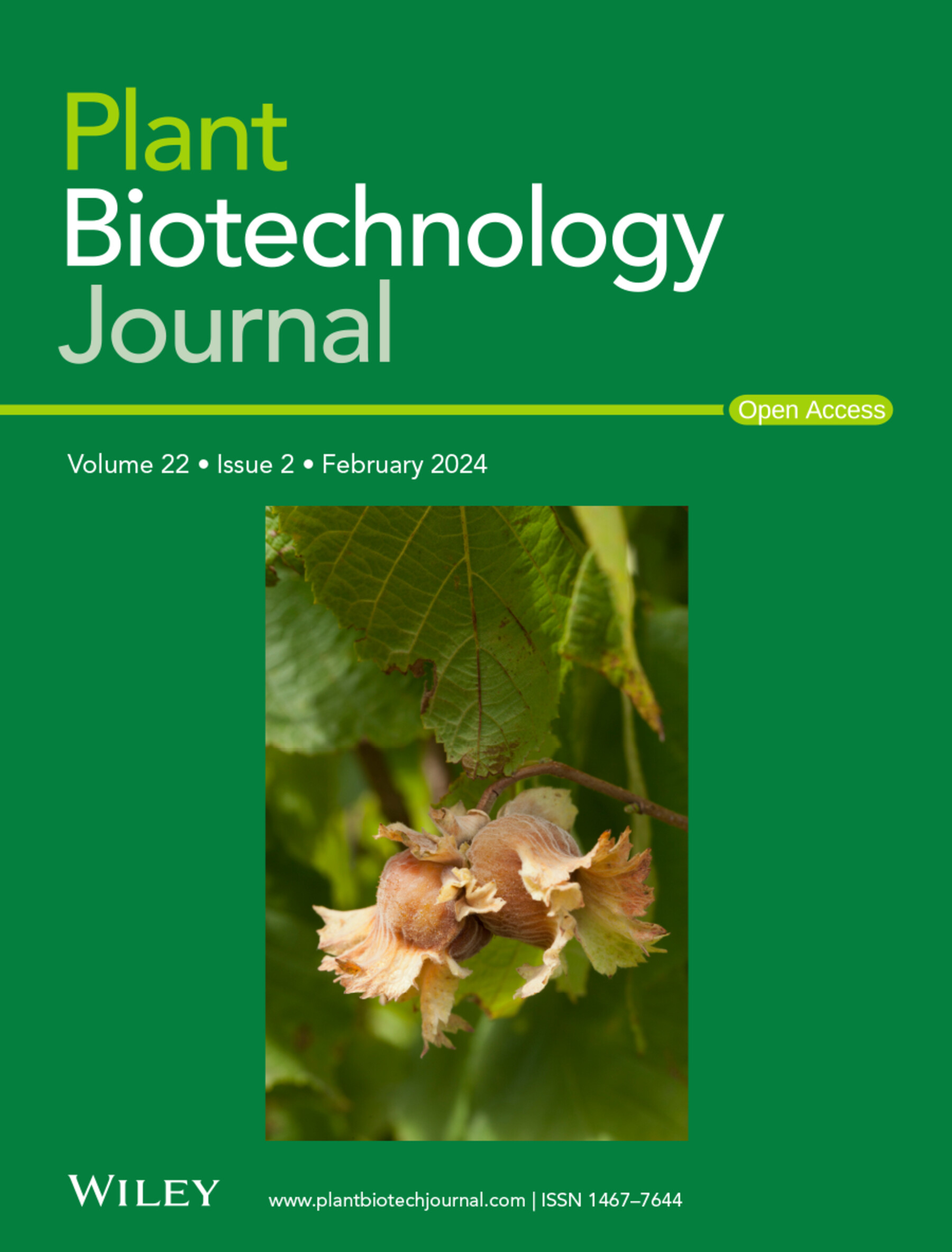沿本烟菌分泌途径的β -半乳糖苷酶的鉴定,这些酶共同阻碍了半乳糖延伸聚糖在重组糖蛋白上的工程
IF 10.1
1区 生物学
Q1 BIOTECHNOLOGY & APPLIED MICROBIOLOGY
引用次数: 0
摘要
糖基化是许多生物制药的一个重要方面,包括抗寄生虫疫苗。植物,特别是烟叶,已被证明是具有定制糖基化的生物制药的优秀生产宿主。如果需要,半乳糖基化可以通过适当的糖基转移酶的共表达引入到生物制药中。然而,由于天然N. benthamiana β -半乳糖苷酶(NbBGALs)截断这些聚糖,获得具有末端半乳糖残基的均质糖型仍然很困难。最近,第一个NbBGAL已被鉴定出来,但敲除系不足以实现接近完全的半乳糖基化,这表明其他酶可能具有类似的活性。在这项研究中,我们选择了10种nbbgal进行了进一步的亚细胞定位研究,研究了它们在体外和体内对N -聚糖上的β1,4 -连接半乳糖和O -聚糖上的β1,3 -连接半乳糖的活性。我们发现NbBGAL3B定位于外质体中,并且与之前鉴定的NbBGAL1对N -聚糖上的β1,4 -连接的半乳糖具有相似的特异性。相比之下,除了BGAL1外,所选的nbbgal都没有从O -聚糖中裂解β1,3 -链半乳糖。此外,我们提供了一种新的策略,利用Lewis X基序的保护能力和随后去除天线聚焦残基,在半乳糖苷酶易感糖蛋白上实现接近完全的半乳糖基化。综上所述,我们的研究结果为nbbgal裂解半乳糖的能力提供了一个广泛的视角,并确定了NbBGAL3B是在工程N -聚糖时不需要的β -半乳糖苷酶活性的第二个主要贡献者。这项工作为产生缺乏不需要的NbBGALs的敲除系奠定了基础,因此不会妨碍含有半乳糖延伸聚糖的重组糖蛋白的产生。本文章由计算机程序翻译,如有差异,请以英文原文为准。
Identification of β‐galactosidases along the secretory pathway of Nicotiana benthamiana that collectively hamper engineering of galactose‐extended glycans on recombinant glycoproteins
SummaryGlycosylation is an important aspect for many biopharmaceuticals, including vaccines against parasitic helminths. Plants, especially Nicotiana benthamiana , have proven to be excellent production hosts for biopharmaceuticals with tailor‐made glycosylation. If desired, galactosylation can be introduced on biopharmaceuticals through co‐expression of the appropriate glycosyltransferase. However, achieving homogenous glycoforms with terminal galactose residues remains difficult as native N. benthamiana β‐galactosidases (NbBGALs) truncate these glycans. Recently, the first NbBGAL has been identified, but a knockout line was insufficient to achieve near complete galactosylation, suggesting that other enzymes could have similar activity. In this study, we selected 10 NbBGALs for further investigation into subcellular localization, in vitro and in vivo activity against β1,4‐linked galactose on N‐glycans and β1,3‐linked galactose on O‐glycans. We show that NbBGAL3B is localized in the apoplast and has similar specificity for β1,4‐linked galactose on N‐glycans as the previously identified NbBGAL1. In contrast, none of the selected NbBGALs cleaved β1,3‐linked galactose from O‐glycans besides BGAL1. In addition, we provide a novel strategy to achieve near complete galactosylation on galactosidase‐prone glycoproteins by using the protective capacity of the Lewis X motif and subsequent removal of the antennary fucose residues. Taken together, our results provide a broad view of the ability of NbBGALs to cleave galactoses and have identified NbBGAL3B as the second major contributor of undesired β‐galactosidase activity while engineering N‐glycans. This work lays the foundation for generating knockout lines that are devoid of undesired NbBGALs and therefore do not hamper the production of recombinant glycoproteins with galactose‐extended glycans.
求助全文
通过发布文献求助,成功后即可免费获取论文全文。
去求助
来源期刊

Plant Biotechnology Journal
生物-生物工程与应用微生物
CiteScore
20.50
自引率
2.90%
发文量
201
审稿时长
1 months
期刊介绍:
Plant Biotechnology Journal aspires to publish original research and insightful reviews of high impact, authored by prominent researchers in applied plant science. The journal places a special emphasis on molecular plant sciences and their practical applications through plant biotechnology. Our goal is to establish a platform for showcasing significant advances in the field, encompassing curiosity-driven studies with potential applications, strategic research in plant biotechnology, scientific analysis of crucial issues for the beneficial utilization of plant sciences, and assessments of the performance of plant biotechnology products in practical applications.
 求助内容:
求助内容: 应助结果提醒方式:
应助结果提醒方式:


